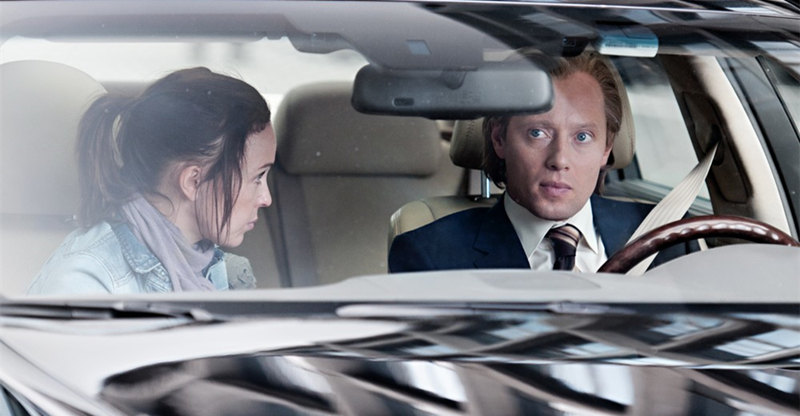“A Lonely Place to Die” is a high-concept film with a low budget—one that begins like “127 Hours” but turns into “Deliverance.”
That’s what happens when a group of five mountain climbers find a girl—buried in a wooden box with an air tube—high in the mountains. Soon, treacherous rock faces aren’t the only hazard that this group has to contend with. The people who hid the girl return, and it quickly devolves into a game of survival as the climbers try to get the girl (and themselves) to safety.
For having just a $4 million budget and a premise that involves lots of helicopter shots and the transportation of crews and equipment to high-altitude locations in the Scottish highlands, “A Lonely Place to Die” looks remarkably slick. If only the beginning didn’t drag and the plot didn’t confuse at times, this one would be a solid 7 out of 10.
Word has it that director Julian Gilbey and his brother, Will, decided to become master climbers once they decided to turn their screenplay into a film. It paid off, because there’s nothing amateurish or low-budget about the mountaineering shots. In the pre-title sequence, for example, Gilbey alternates long shots of the climbers on the mountains with extreme close-ups of hands and feet and ropes to create an effective sequence marred only by the decision to include an extreme close-up of a camera that had fallen quite far down. But the shot makes it look as if it’s not much of a drop at all.
It’s the small things in this film that drag it down. The action is wonderfully filmed, the premise is strong enough to hold your attention, and the acting—though we’re not talking about household names here—is competent. But there are quite a few “dropped camera” moments that make you mentally scratch your head.
Following a “grabber” opening, although the characters are introduced three, then two at a time and we get a long pre-climbing scene inside a cabin, the Gilbeys really don’t give us much information about them or anything to clarify the relationships among the characters . . . or even their location. All we know is that one guy almost got one woman killed, and she seems to be involved with another man in the group. When they get to a cabin there’s another woman inside who seems like a friend, and then a fifth person just sort of turns up, and the next thing we know they’re all talking about climbing the next day. More of a situational grounding would help viewers once this group starts climbing and we’re supposed to care who gets hurt, who struggles, who dies (yep, there are casualties), and who’s the point-of-view character. Or is there one?
Melissa George, Ed Speleers, Eamonn Walker, Alec Newman, and Kate Magowan star as the climbers, with Holly Boyd playing the youngster in trouble. Once we get this group out of the cabin and they find the girl and realize they have to get her down the mountain—fast—things get moving so quickly that we don’t question some very basic things. Like, why did Croats or Serbs (it’s hard to tell which, if you don’t read the liner notes) choose a Scottish mountain range to stash the kidnapped girl? And how did they get so high up, if the climbing is challenging enough to entice this group of experienced mountaineers? I mean, two guys with high-powered rifles and no climbing gear, no ropes, just appear and bullets start flying. So were they helicoptered in? Or what? Plus, all the long shots of the highland mountains raise the issue of a rather large coincidence. All of that ground to cover, and this group manages to hear a girl shouting from her underground location, though she’s been underground long enough to be dehydrated and starving?
As I said, once the action gets rolling, you stop questioning for the most part and just get swept along in the drama. Once they reach town, however, and there’s a Carnivale-like festival featuring costumed dancers in a parade, it’s hard not to think that the parade was placed there as a part of the plot structure—as a way to impart color and confusion and chaos into the film once the dangerous terrain sequences have ended. It felt out of place. But the trivia section at Imdb.com notes that the festival is “based on an actual event known as the Beltane Fire Festival,” an “annual participatory arts event and ritual drama held on April 30 on Calton Hill in Edinburgh.” That raises an important question: should an audience have to read DVD cover and movie site notes in order to make sense of the plot?
I wouldn’t think so. But there’s enough positive happening to where you can ignore those “dropped camera” moments and enjoy “A Lonely Place to Die” as a decent, mid-tier thriller.
Video:
“A Lonely Place to Die” was filmed using a Red One Camera and printed on 35mm stock, so that accounts for the super-sharp picture with just enough grain to give it a filmic texture. It’s presented here, via a solid AVC/MPEG-4 transfer, in 2.35:1 anamorphic widescreen—perfect for showcasing the panoramic views of mountains in long shots and humans taking flight in the action scenes. Skin tones are natural-looking for the most part, but they tend toward the orange on occasion. Other colors are nicely saturated. Reds and blues particularly pop out, the there’s a nice amount of detail on long and medium shots as well as the close-ups.
Audio:
The audio is an English DTS-HD MA 5.1, which has a lively, rich timbre and brings rear effects speakers nicely to life during the firing of bullets and during the mayhem of the parade. Underwater sounds and the sounds of the river are also evocatively rendered. Subtitles are in English SDH and Spanish.
Extras:
The only bonus feature is the trailer.
Bottom line:
I never expect much from a small-studio or low-budget thriller because they’re usually disappointing. But “A Lonely Place to Die” is a cut above them, with only minor logic and plot points getting in the way.


